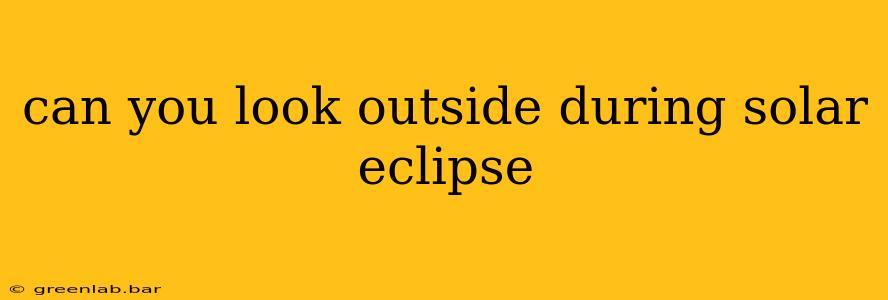Can You Look at the Sun During a Solar Eclipse? A Definitive Guide to Safe Solar Viewing
Looking directly at the sun, even during a solar eclipse, is incredibly dangerous and can cause permanent eye damage, including blindness. Never look directly at the sun without proper eye protection. This applies whether it's a partial, annular, or total solar eclipse. The sun's intensity is so great that even a brief glance can inflict serious harm.
This guide will explain why looking at the sun during a solar eclipse is so dangerous, what safe viewing methods exist, and how to protect your eyesight during this spectacular celestial event.
Why is Looking at the Sun During a Solar Eclipse Dangerous?
The sun emits intense radiation, including ultraviolet (UV) and infrared (IR) light, which can damage the retina, the light-sensitive tissue at the back of your eye. This damage can be gradual and painless, meaning you might not realize the extent of the harm until it's too late. Even during a partial eclipse, the sun's rays are powerful enough to cause damage. The reduced brightness during a partial eclipse can actually be deceiving – it might seem safe, but it isn't.
During a total solar eclipse, when the moon completely blocks the sun's disc, it's safe to look directly at the sun only during the period of totality. This is a short time window, and you must know the precise start and end times of totality for your location. Looking at the sun even for a few seconds before or after totality is still dangerous.
Safe Ways to View a Solar Eclipse
Several safe methods allow you to witness this awe-inspiring event without risking your eyesight:
-
ISO 12312-2 Certified Solar Filters: These are special-purpose solar filters designed specifically for safe solar viewing. They significantly reduce the sun's intensity, allowing you to view the eclipse without harming your eyes. Look for glasses or viewers explicitly labeled as meeting this ISO standard. Homemade filters or ordinary sunglasses are not sufficient and offer no protection.
-
Solar Eclipse Glasses: These are readily available online and from many science museums and planetariums before a solar eclipse event. Again, ensure they are ISO 12312-2 certified.
-
Indirect Viewing Methods: This is a safe and effective way to observe the eclipse. One method is to project the sun's image onto a surface using a pinhole projector. You can create a simple pinhole projector using a cardboard box, aluminum foil, and a pin. Another method is to use binoculars or a telescope with a solar filter attached to project the image onto a screen.
-
Solar Telescopes: These are specialized telescopes equipped with filters specifically designed to view the sun safely.
What to Avoid
-
Regular Sunglasses: Ordinary sunglasses, even very dark ones, are not safe for viewing a solar eclipse. They do not offer adequate protection against the sun's harmful radiation.
-
Homemade Filters: Don't try to make your own solar filter. Improperly made filters can be dangerous and offer no real protection.
-
Looking Directly at the Sun (except during totality of a total solar eclipse): This is the most important point to remember. Avoid looking directly at the sun unless you are fully protected with certified solar viewing equipment and are aware of the precise time of totality during a total solar eclipse.
Protecting your eyesight during a solar eclipse is paramount. Always prioritize safe viewing methods and never compromise your eye health for a glimpse of this spectacular event. By following these guidelines, you can safely enjoy the wonder of a solar eclipse for years to come.

